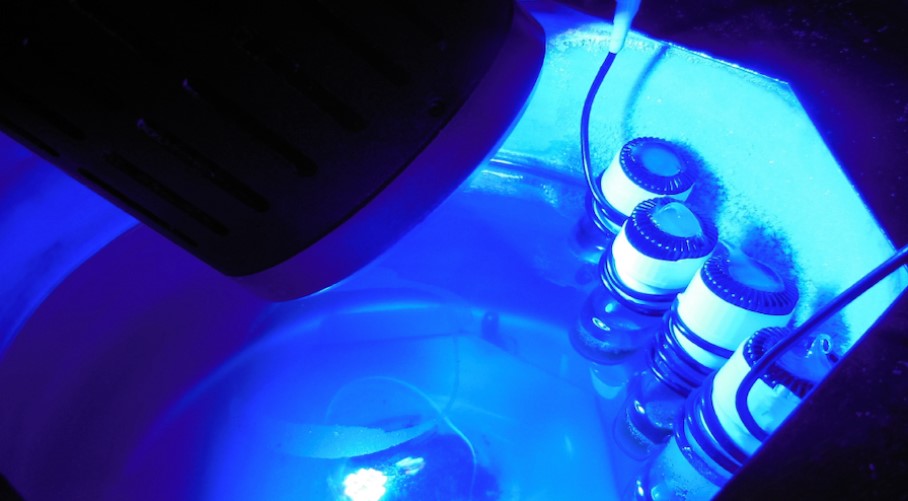|
LEDs combined with copper may be key to developing new medicines, electronics
Monday, January 24, 2022 - 12:17:13
Mining.com
|

|
In a paper published in the Journal of the American Chemical Society, the scientists explain that the technique they came up with allows them to perform what is known as a cross-coupling reaction, in which two molecules are joined via a carbon-carbon bond. This is one of the most widely used types of reactions and is essential for creating most of the chemical products used today.
The researchers say that the use of copper—a cheaper and more commonly available metal—as a catalyst for a cross-coupling reaction is a breakthrough in sustainability since this reaction typically relies on the use of precious metals such as palladium.
The new method is also considered advantageous because the copper metal in the molecular catalyst itself absorbs the blue light, rather than needing a separate light-absorbing compound in addition to the catalyst. This makes the synthesis not only cheaper and simpler to perform, but also easier to control since there are fewer moving parts.
The blue light plays a key role in activating the copper-based catalyst. Theoretical calculations showed that this light exposure causes electrons to move from the metal copper atom to a connected subunit of the molecular catalyst. This excited state has separated electrical charges, making the catalyst much more reactive and, thus, the researchers were able to use it to carry out a cross-coupling reaction that creates an acyl group, which is useful for the synthesis of pharmaceuticals and photoelectronic materials.
A key aspect of this method is that the formation of the acyl group occurs asymmetrically. This means one of the two possible mirror-image versions of the product molecule is selectively produced, a feature highly desired for the development of new medicines.
The scientists tested their new method with multiple starting materials, notably including a material derived from probenecid, a medicine for gout. They say the product they obtained from this starting material has potential applications in the pharmaceutical industry.
Implementation of this new method is expected to both provide cost savings and increase the sustainability of the production of a wide variety of chemical compounds with potential uses in medicine and electronics.
“This synthetic method is a breakthrough because it combines two easily obtainable items, blue LED light and copper, to achieve a coupling reaction that did not exist before,” Yusuke Masuda, lead author of the study, said in a media statement. “Technology that produces useful compounds from resources which are abundantly available on earth is critical for the sustainable development of humanity. I expect this advance will become a milestone in the development of sustainable molecular synthetic methods.”
http://www.miningnewspro.com/en/News/619466/LEDs combined with copper may be key to developing new medicines, electronics
|